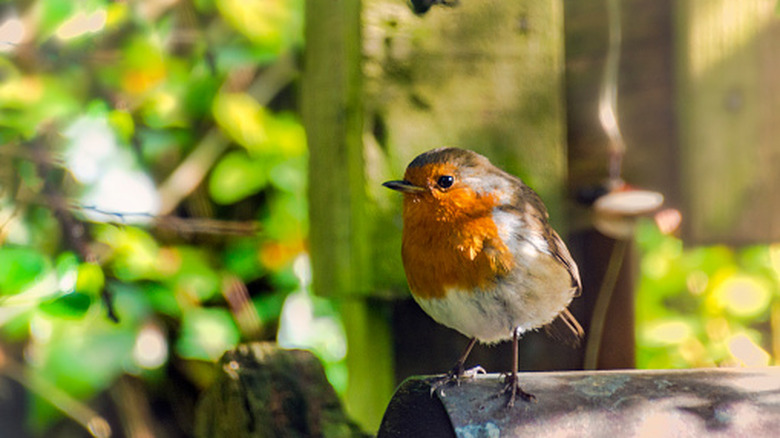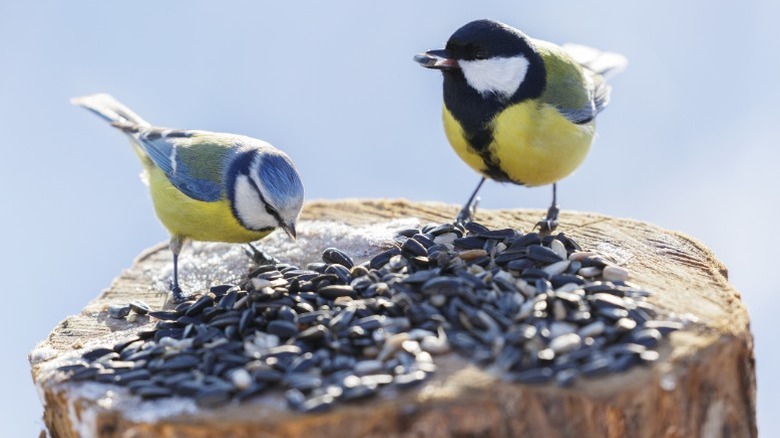The Common Mixed Bird Seed You Should Avoid Using In Your Feeder At All Costs
We may receive a commission on purchases made from links.
Without realizing it, one of the biggest mistakes you and other bird enthusiasts are making with bird feeders is putting out mixed bird seed that backyard birds won't actually eat. While it's common for bird seed to be sold with added wasteful filler, you should pay attention so you can steer clear from buying it, as mixed seed with fillers — like flax and wheat — is commonly left behind by our feathery friends. This wasted bird seed can rot and spread bacteria.Plus, fallen filler seed can attract rodents to your yard.
Fillers are used by companies because they can add them into a bag of quality seeds — like sunflower and safflower seeds – to increase the weight for less money. It's cheaper to fill out a 20 pound bag of seed with a small amount of good seeds and lots of filler seeds. While putting out bird seed with fillers will not necessarily harm birds, more often than not, they won't choose to eat them unless there aren't any other options.
Alternative options to mixed bird seed
Not all mixed bird seed blends are bad, but instead of using those with unwanted, wasteful fillers, try to select blends that are made up entirely of seeds that birds seek out. If you want to see specific species of birds in your yard, you can also create a custom buffet with their favorites: To attract more songbirds to your yard for example, focus on nutrient-filled sunflower seeds, safflower seeds, thistle, and peanuts. Otherwise, go with options that feature plenty of black-oil sunflower seeds, which most birds will gratefully partake in, as well as cracked corn and other hearty things.
Sometimes these good mixed bird seed blends will be labeled "no-mess" like the Kaytee Wild Bird Ultimate No Mess Seed. Even if you use a no-mess blend, always pay attention to methods to properly clean your backyard bird feeder, including clearing out any old seed before it develops mold and mildew.

